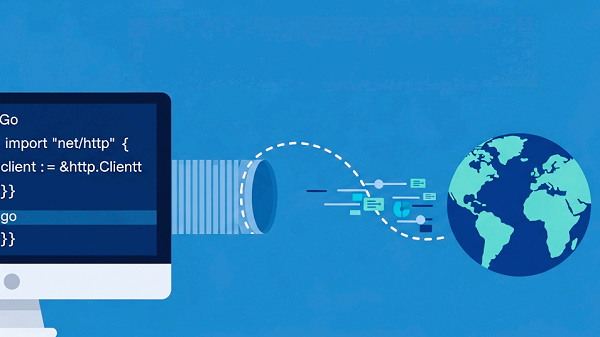Sneaker Proxies: Guide to Copping Limited-Edition Drops
Practical guide to sneaker proxies—types, top providers for late 2025, setup checklist, tests, and tips to boost your odds in 2026 drops without bans.
Dec 11, 2025
Configure SOCKS5 proxies with Resty in Go—step-by-step setup, auth, DNS handling, advanced pooling, rotation, and troubleshooting.
Integrating a SOCKS5 proxy into your Resty-powered Go applications unlocks stronger privacy, geo-bypass capabilities, and robust workflows like web scraping or API testing. This guide walks you through every step—from installation to advanced troubleshooting—so you can confidently configure Resty with GoProxy’s SOCKS5 service.

Resty: A lightweight, highly flexible HTTP client library for Go (v2 now). It simplifies sending HTTP requests with minimal code, making it a favorite among Go developers.
SOCKS5: A versatile proxy protocol that routes TCP and UDP traffic through an intermediary server. Unlike HTTP, SOCKS5 proxies are not limited to web traffic, supporting everything from streaming to Tor hidden services.
Together, they help Go developers achieve:
| Scenario | User Concern | Desired Outcome |
| Web Scraping & Data Collection | IP bans; lack of rotation | Automatic proxy rotation with minimal code changes |
| API Integration Behind Firewalls | Corporate network restrictions | Seamless SOCKS5 handshake for API calls |
| Accessing Geo-Locked Services | Region-locked content; streaming platforms | Low-latency proxy with geo-targeted IPs |
| Tor Hidden Service Interaction | Resolving .onion domains through SOCKS5 | Proper DNS tunneling to hidden services |
| CI/CD & Automated Testing | Tests blocked by network policies | Proxy-enabled test suite that runs behind firewalls |
Before diving in, ensure you have:
Go (1.18+) installed
Resty v2
bash
go get github.com/go-resty/resty/v2
golang.org/x/net/proxy
For advanced SOCKS5 handling:
bash
go get golang.org/x/net/proxy
GoProxy SOCKS5 credentials
Obtain your host, port, and optional username/password from the GoProxy dashboard.
Let’s get started with a simple setup. Follow these steps to connect Resty to a SOCKS5 proxy.
Group standard imports separately from external ones, per Go conventions:
go
import (
"log"
"net/http"
"time"
"github.com/go-resty/resty/v2"
"golang.org/x/net/proxy"
)
go
dialer, err := proxy.SOCKS5("tcp", "proxy.goproxy.com:1080", nil, proxy.Direct)
if err != nil {
log.Printf("Error creating SOCKS5 dialer: %v", err)
}
go
transport := &http.Transport{
Dial: dialer.Dial,
}
client := resty.New().
SetTransport(transport).
SetTimeout(15 * time.Second)
go
resp, err := client.R().Get("https://api.ipify.org?format=text")
if err != nil {
log.Fatalf("Request failed: %v", err)
}
log.Println("Proxy IP:", resp.String())
Beginner Tip: Replace proxy.goproxy.com:1080 with your actual proxy details from GoProxy.
Pro Tip: If api.ipify.org rate-limits you, try https://httpbin.org/ip instead.
Supply credentials securely via proxy.Auth rather than embedding them in URLs:
go
auth := &proxy.Auth{
User: "your_username",
Password: "your_password",
}
dialer, err := proxy.SOCKS5("tcp", "proxy.goproxy.com:1080", auth, proxy.Direct)
if err != nil {
log.Fatalf("Failed to create authenticated dialer: %v", err)
}
// Reuse the transport setup from above:
transport := &http.Transport{Dial: dialer.Dial}
client := resty.New().SetTransport(transport)
Once basic connectivity is confirmed, you can optimize for more complex use cases:
By default, Go resolves hostnames locally, which breaks Tor hidden services. Defer DNS to the proxy:
go
import "context"
import "net"
transport := &http.Transport{
DialContext: func(ctx context.Context, network, addr string) (net.Conn, error) {
return dialer.Dial(network, addr)
},
}
client := resty.New().SetTransport(transport)
Tip: Requires Go 1.13+
For high-throughput scraping, reuse transports and tune max idle connections:
go
transport.MaxIdleConns = 50
transport.MaxIdleConnsPerHost = 50
transport.IdleConnTimeout = 90 * time.Second
Set reasonable timeouts and retry logic to handle unreliable proxies:
go
client.
SetTimeout(30 * time.Second).
SetRetryCount(3).
SetRetryWaitTime(5 * time.Second)
Automated (GoProxy): Many plans include automatic IP rotation—simply use your single endpoint.
Manual Rotation: Cycle through multiple endpoints in code:
go
proxies := []string{
"proxy1.goproxy.com:1080",
"proxy2.goproxy.com:1080",
}
for _, addr := range proxies {
dialer, _ := proxy.SOCKS5("tcp", addr, auth, proxy.Direct)
transport := &http.Transport{Dial: dialer.Dial}
client.SetTransport(transport)
// perform your requests...
}}
Use a reliable IP-echo service:
go
res, err := client.R().Get("https://api.ipify.org?format=json")
if err != nil || res.StatusCode() != 200 {
log.Fatalf("IP check failed: %v / status %d", err, res.StatusCode())
}
log.Println("Outbound via proxy:", res.String())
Measure round-trip times and adjust SetTimeout accordingly.
Attempt fetching a known .onion site to validate DNS tunneling.
go
resp, err := client.R().Get("http://exampleonionaddress.onion")
if err != nil {
log.Printf("Onion test failed (expected if Tor down): %v", err)
} else {
log.Printf("Onion status: %d", resp.StatusCode())
}
| Error Message | Likely Cause | Solution |
| No suitable address found | DNS resolved locally, not via proxy | Switch to DialContext method (see section 4.1) |
| Connection refused / timeout | Wrong host/port or server down | Verify GoProxy server status and credentials |
| HTTP 403 or Geo-blocked | Target service blocks proxy IP | Rotate proxies or switch geo-region |
| TLS handshake error | Proxy or endpoint misconfigured for HTTPS | Ensure TLSHandshakeTimeout is set and certificate is valid |
| Authentication error | Incorrect username/password | Double-check credentials in proxy.Auth |
Yes—use SetProxy("http://…") or SetProxy("https://…") for HTTP/HTTPS proxies.
Enable debug mode:
go
client.SetDebug(true)
Periodically hit a lightweight endpoint (e.g., /status) and track success rates or latency metrics.
Expect an added latency of 50–200 ms; connection pooling and fast proxies help mitigate this.
Configuring Resty with GoProxy’s SOCKS5 service empowers building privacy-focused, region-agnostic Go applications. By following the practical steps—from dialer instantiation to advanced DNS handling—you’ll have a reliable, high-performance proxy setup, ready for web scraping, API integrations, and even Tor hidden services. Keep an eye on Resty’s roadmap for built-in SOCKS5 support, but in the meantime, this guide has you covered.
< Previous
Next >
 Cancel anytime
Cancel anytime No credit card required
No credit card required